CHOI Byungso
Biography
CHOI Byungso (b. 1943) has continued to work on changing the material properties of his medium through the performative act of erasing text on newspaper with a ballpoint pen and pencil, following his own unique methodology. The active incorporation of everyday objects such as newspapers, ballpoint pens, and pencils into his work manifests the expression of a distinctive spirit of experimentation, evident from the early stages of his artistic activities. Through performative and repetitive acts on the screen, materials salvaged from life are reimagined with completely new properties, distinct from their original identities.
In the history of contemporary art in Korea, CHOI Byungso's oeuvre occupies a special niche. His working process conspicuously reveals spirituality and performativity, and the visual results often present as monochrome screens, which resonate with the Dansaekhwa (Korean monochrome painting) movement prevalent in the 1970s Korean art scene. Indeed, he has shared paths with Dansaekhwa artists, participating in major exhibitions such as A Facet of Korean Contemporary Art (1977) at the Central Museum of Art in Tokyo, Japan, Ecole de Seoul (1976-1979), and Dansaekhwa of Korea (2012) at the National Museum of Modern and Contemporary Art, Korea. Nonetheless, to classify CHOI Byungso simply as a Dansaekhwa artist would be to overly simplify and constrain his diverse artistic practices. His early works, such as the one involving a single iron core tied among several on the floor, the rotting of mackerel in exhibition spaces, and the interpretation of photographs as text, all exemplify the challenging spirit of the Korean experimental art movement of the 1960s and 70s. For example, Untitled (Bird) (1975), showcased at a solo exhibition at ARARIO GALLERY CHEONAN, utilizes a photograph of two birds from National Geographic magazine, juxtaposed with six English words—'sky', 'cloud', 'wind', 'birds', 'flying', 'meeting'—to investigate the interplay between image and text.
CHOI Byungso was a participant in the Korean Experimental Artists exhibition alongside PARK Hyunki, LEE Kang-So, and others in 1974, and played a pivotal role in the Daegu Contemporary Art Festival for five years. Starting at Keimyung University in 1974, the Daegu Contemporary Art Festival was Korea's inaugural contemporary art festival, escalating to a national event over five iterations until 1979, and is recognized as a cornerstone for the evolution of contemporary art in Korea. CHOI Byungso, LEE Kang-So, PARK Hyunki, Kim Ki-dong, and others were active as its founding members. Amidst the dialectic of figurative and abstract art, the Korean art scene was profoundly impacted by the integration of performance, avant-garde, and video art. CHOI Byungso also affiliated with the avant-garde group '35/128', a collective formed in 1975 by the youthful vanguard of the Daegu Contemporary Art Festival. The critic LEE Il, in the preface to the 1975 exhibition, praised the group, stating, "I highly esteem the unequivocal spirit of independence, the conviction in 'anti-power', and a readiness for transformation, which I regard as the most pressing demands of our nation's contemporary art, and I hold great expectations for the newly inaugurated '35/128'."
Works
-
 0220206 Untitled, 2022
0220206 Untitled, 2022 -
 Untitled 0220423, 2022
Untitled 0220423, 2022 -
 0211109 Untitled, 2021
0211109 Untitled, 2021 -
 Untitled 0210401, 2021
Untitled 0210401, 2021 -
 Untitled 0210602, 2021
Untitled 0210602, 2021 -
 Untitled 0211002, 2021
Untitled 0211002, 2021 -
 Untitled 0211107, 2021
Untitled 0211107, 2021 -
 Untitled 0211108, 2021
Untitled 0211108, 2021 -
 Untitled 0200221, 2020
Untitled 0200221, 2020 -
 Untitled 0200904, 2020
Untitled 0200904, 2020 -
 Untitled 0170712, 2017
Untitled 0170712, 2017 -
 Untitled 0170917, 2017
Untitled 0170917, 2017 -
 Untitled, 2016
Untitled, 2016 -
 Untitled, 2016
Untitled, 2016 -
 Untitled 0160102, 2016
Untitled 0160102, 2016 -
 Untitled 998 무제 998, 1998
Untitled 998 무제 998, 1998 -
 Untitled 9750000-2, 1975/2020
Untitled 9750000-2, 1975/2020 -
 Untitled, 1975
Untitled, 1975 -
 Untitled 9750000-1, 1975
Untitled 9750000-1, 1975 -
 Untitled 9750000-2, 1975
Untitled 9750000-2, 1975 -
 Untitled 9750000-3, 1975
Untitled 9750000-3, 1975 -
 Untitled, 1974
Untitled, 1974
Exhibitions
-

Forêt
25 May - 17 July 2021 SeoulRead more -

CHOI Byungso: 意味와 無意味 SENS ET NON-SENS_Works from 1974-2020
26 November 2020 - 27 February 2021 SeoulRead more -

VOICE OF ASIA
1 July - 27 August 2017 ShanghaiRead more -

CHOI Byungso
5 March - 26 April 2015 SeoulRead more -

Between the Lines: Korean Contemporary Art Since 1970
1 March - 6 May 2014 CheonanBetween the Lines: Korean Contemporary Art Since 1970 Period | 2014. 3. 1(Sat) - 5. 6(Tue) Venue | ARARIO GALLERY CHEONAN Artists | Ku-lim Kim, Myung-ro Youn, U-fan Lee, Hee...Read more
Press
-

LEE Jinju, Discontinuouscontinuity
Kim Bora, The Korea Economic Daily, 27 August 2025 -

Artforum: CHOI Byung-so
Artforum, 1 May 2021 -

Frieze: CHOI Byungso
Andy St. Louis, Frieze, 22 February 2021 -

Eazel: CHOI Byungso
Sanghee Kim, Eazel, 17 February 2021 -

Art in Culture: CHOI Byungso
KIM Jong-gil, Art in Culture, 1 February 2021
News
-

CHOI Byungso 'Unwritten, Unmade, Untitled' Exhibition at Galleria Department Store’s Art Week
August 26, 2025Kim Hyejin, Maeil Business NewspaperRead more -

Ballpoint Pen Turns Newspaper into a Dark Abyss
April 24, 2025Kim Yutae, The Maeil Business NewspaperRead more -

Crossing Out and Erasing Newspapers and Magazines… Rethinking the Meaning of Media
April 22, 2025Kim Min, BizNRead more -

Freedom Found in the Erasure of Print... CHOI Byungso’s "Untitled"
April 17, 2025Kim Moojong, Seoul FinanceRead more -

The 'Black Painting' That Moved His Two Daughters to Tears… The Sublimity of CHOI Byungso’s "Untitled"
April 17, 2025Park Hyunjoo, NewsisRead more -

A newspaper, discarded after a single day's use, becomes immortalized as art… Why did they erase the newspapers?
January 7, 2025Gwon Geunyoung, The JoongAngRead more -
![[News] A brilliant 'hojakjil' drawn and erased with a Monami ballpoint pen for 40 years](data:image/gif;base64,R0lGODlhAQABAIAAAAAAAP///yH5BAEAAAAALAAAAAABAAEAAAIBRAA7)
[News] A brilliant 'hojakjil' drawn and erased with a Monami ballpoint pen for 40 years
December 10, 2024Lee Heon, HankyungRead more -
![[News] CHOI Byungso's Solo Exhibition, Indang Museum](data:image/gif;base64,R0lGODlhAQABAIAAAAAAAP///yH5BAEAAAAALAAAAAABAAEAAAIBRAA7)
[News] CHOI Byungso's Solo Exhibition, Indang Museum
December 4, 2024Hwang Inok, Daegu NewsRead more -
![[News] Why did he fill the paper with dense strokes of pen... CHOI Byungso's exhibition 'NOW HERE'](data:image/gif;base64,R0lGODlhAQABAIAAAAAAAP///yH5BAEAAAAALAAAAAABAAEAAAIBRAA7)
[News] Why did he fill the paper with dense strokes of pen... CHOI Byungso's exhibition 'NOW HERE'
November 7, 2024Lee Yeonjeong, Maeil NewsRead more -
![[News] The Reflection on "Erasure": CHOI Byungso's Special Exhibition now here](data:image/gif;base64,R0lGODlhAQABAIAAAAAAAP///yH5BAEAAAAALAAAAAABAAEAAAIBRAA7)
[News] The Reflection on "Erasure": CHOI Byungso's Special Exhibition now here
November 1, 2024Kwon Joonbeom, TBC NewsRead more -
![[News] Daegu Health College Indang Museum Hosts CHOI Byungso’s Special Exhibition "now here"](data:image/gif;base64,R0lGODlhAQABAIAAAAAAAP///yH5BAEAAAAALAAAAAABAAEAAAIBRAA7)
[News] Daegu Health College Indang Museum Hosts CHOI Byungso’s Special Exhibition "now here"
October 22, 2024Jeon Soojung, Kyoungbook NewsRead more -
![[News] Daegu Health College Indang Museum Hosts CHOI Byungso’s Special Exhibition 'now here'](data:image/gif;base64,R0lGODlhAQABAIAAAAAAAP///yH5BAEAAAAALAAAAAABAAEAAAIBRAA7)
[News] Daegu Health College Indang Museum Hosts CHOI Byungso’s Special Exhibition 'now here'
October 18, 2024Na Hoyong, NewsisRead more -
![[News] Daegu Health College Indang Museum Hosts CHOI Byungso’s Special Exhibition "now here"](data:image/gif;base64,R0lGODlhAQABAIAAAAAAAP///yH5BAEAAAAALAAAAAABAAEAAAIBRAA7)
[News] Daegu Health College Indang Museum Hosts CHOI Byungso’s Special Exhibition "now here"
October 18, 2024Lee Insu, Aju NewsRead more -
![[News] Arario Gallery Participates in International Art Fair Frieze Seoul and KIAF Seoul 2023 at the same time](data:image/gif;base64,R0lGODlhAQABAIAAAAAAAP///yH5BAEAAAAALAAAAAABAAEAAAIBRAA7)
[News] Arario Gallery Participates in International Art Fair Frieze Seoul and KIAF Seoul 2023 at the same time
17 August 2023Kim Jung Mo, Segye IlboRead more -
![[Exhibition] Only the Young: Experimental Art in Korea, 1960s-1970s](data:image/gif;base64,R0lGODlhAQABAIAAAAAAAP///yH5BAEAAAAALAAAAAABAAEAAAIBRAA7)
[Exhibition] Only the Young: Experimental Art in Korea, 1960s-1970s
26 May 2023JUNG Kangja's installation work < Kiss Me> (1967), archival photographs and video work of her performance and CHOI Byungso's video work < Unititled 9870000> (1978)...Read more -
![[Exhibition] With Paper](data:image/gif;base64,R0lGODlhAQABAIAAAAAAAP///yH5BAEAAAAALAAAAAABAAEAAAIBRAA7)
[Exhibition] With Paper
2 March 2023Group Exhibition Arario Artist: CHOI Byungso < With Paper> Horim Museum Sinsa, Seoul, Korea 2 Mar - 29 Jul 2023Read more -
![[Fair] West Bund Art & Design 2022](data:image/gif;base64,R0lGODlhAQABAIAAAAAAAP///yH5BAEAAAAALAAAAAABAAEAAAIBRAA7)
[Fair] West Bund Art & Design 2022
8 November 2022Arario Gallery is pleased to announce its participation in West Bund Art & Design 2022 from 10 to 13 November. The booth will feature the...Read more -
![[Art Fair] Art Basel Hong Kong 2022](data:image/gif;base64,R0lGODlhAQABAIAAAAAAAP///yH5BAEAAAAALAAAAAABAAEAAAIBRAA7)
[Art Fair] Art Basel Hong Kong 2022
17 May 2022Arario Gallery is pleased to announce its participation in the Satellite Booth and Online Viewing Room section at Art Basel Hong Kong 2022. Welcoming onsite...Read more -
![[Art Fair] Art Busan 2022](data:image/gif;base64,R0lGODlhAQABAIAAAAAAAP///yH5BAEAAAAALAAAAAABAAEAAAIBRAA7)
[Art Fair] Art Busan 2022
4 May 2022Arario Gallery is pleased to announce its participation in the Art Busan 2022, which will run from 12 to 15 May. Visit Arario Gallery’s booth...Read more -
![[Exhibition] CHOI Byungso: The Poetic Collection](data:image/gif;base64,R0lGODlhAQABAIAAAAAAAP///yH5BAEAAAAALAAAAAABAAEAAAIBRAA7)
[Exhibition] CHOI Byungso: The Poetic Collection
27 April 2022The group exhibition, The Poetic Collection, taking place at Seoul Museum of Art explores the correlation between contemporary art and “the poetic” along with two...Read more -
![[Art Fair] Galleries Art Fair 2022](data:image/gif;base64,R0lGODlhAQABAIAAAAAAAP///yH5BAEAAAAALAAAAAABAAEAAAIBRAA7)
[Art Fair] Galleries Art Fair 2022
12 March 2022Arario Gallery is pleased to announce its participation in the Galleries Art Fair 2022, which will run from 16 to 20 March. Works that respond...Read more -
![[Artist Talk] CHOI Byungso](data:image/gif;base64,R0lGODlhAQABAIAAAAAAAP///yH5BAEAAAAALAAAAAABAAEAAAIBRAA7)
[Artist Talk] CHOI Byungso
4 December 2021'MMCA Artist Talk' presents CHOI Byungso, who represents the spirit of Korean experimental art. The talk is presented on YouTube channel of the National Museum...Read more -
![[Exhibition] CHOI Byungso: New Ways of Living for ( )](data:image/gif;base64,R0lGODlhAQABAIAAAAAAAP///yH5BAEAAAAALAAAAAABAAEAAAIBRAA7)
[Exhibition] CHOI Byungso: New Ways of Living for ( )
10 February 2021CHOI Byungso participates in 'New Ways of Living for ( )', a group exhibition, which is currently on view at Suwon I-Park Museum of Art....Read more -
![[Exhibition] CHOI Byungso: KBS World Radio](data:image/gif;base64,R0lGODlhAQABAIAAAAAAAP///yH5BAEAAAAALAAAAAABAAEAAAIBRAA7)
[Exhibition] CHOI Byungso: KBS World Radio
4 February 2021Find out more about CHOI Byungso's solo exhibition '意味와 無意味 SENS ET NON-SENS: Works from 1974 to 2020', which journalist Andy St. Louis discusses in...Read more -
![[Gallery] Arario Gallery Seoul: Christmas Day](data:image/gif;base64,R0lGODlhAQABAIAAAAAAAP///yH5BAEAAAAALAAAAAABAAEAAAIBRAA7)
[Gallery] Arario Gallery Seoul: Christmas Day
25 December 2020We wish you all a Merry Christmas! CHOI Byungso's solo exhibition '意味와 無意味 SENS ET NON-SENS: Works from 1974 to 2020' will be open as...Read more -
![[Gallery] Arario Gallery Seoul: Entry by Appointment Only](data:image/gif;base64,R0lGODlhAQABAIAAAAAAAP///yH5BAEAAAAALAAAAAABAAEAAAIBRAA7)
[Gallery] Arario Gallery Seoul: Entry by Appointment Only
17 December 2020Please make an appointment to schedule your visit to Arario Gallery Seoul starting from Wednesday 16 December. CHOI Byungso 意味와 無意味 SENS ET NON-SENS: Works...Read more -
![[Exhibition] CHOI Byungso: Moment of Gieok](data:image/gif;base64,R0lGODlhAQABAIAAAAAAAP///yH5BAEAAAAALAAAAAABAAEAAAIBRAA7)
[Exhibition] CHOI Byungso: Moment of Gieok
12 November 2020CHOI Byungso's group exhibition 'Moment of Gieok' is open until next month . 'My entire practice is erasing everything printed on the surface of newspapers...Read more




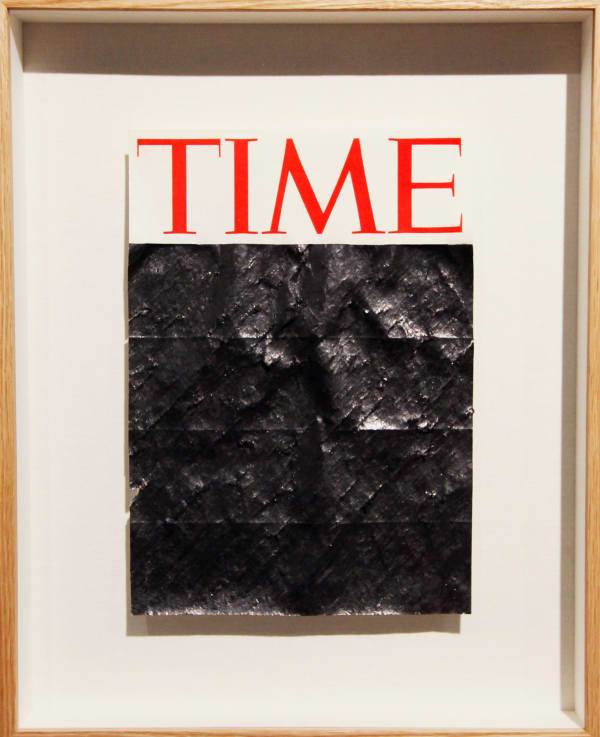







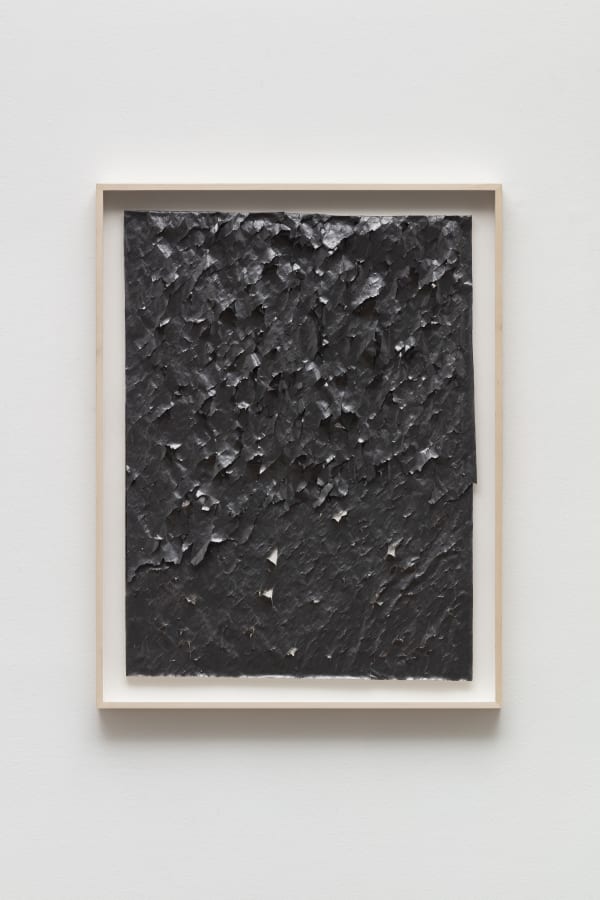
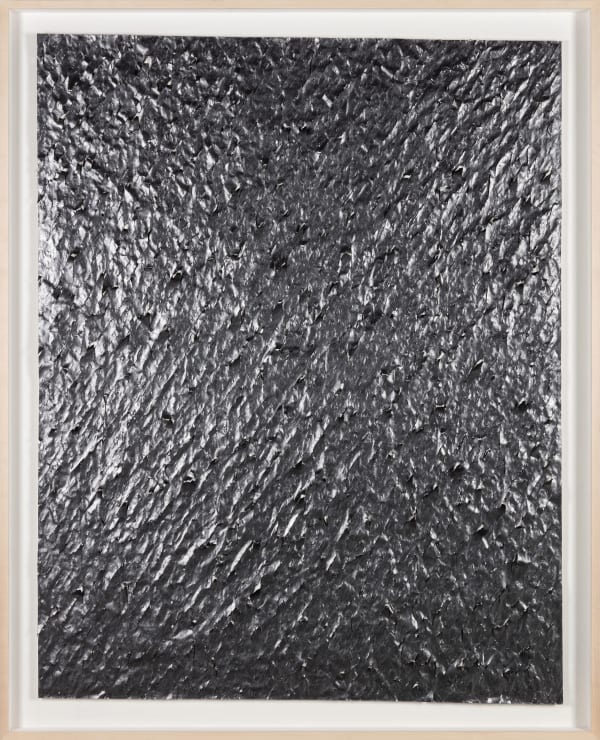












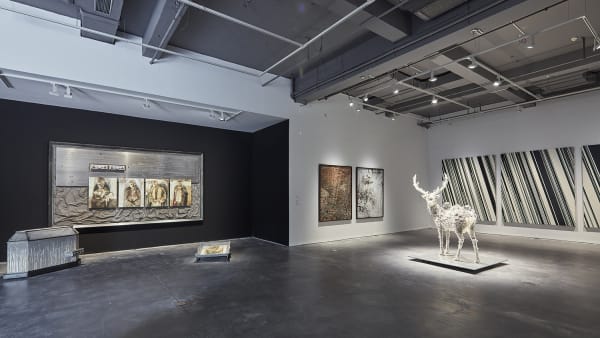

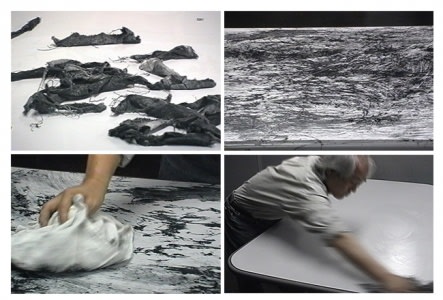











![[News] A brilliant 'hojakjil' drawn and erased with a Monami ballpoint pen for 40 years](https://artlogic-res.cloudinary.com/w_600,c_limit,f_auto,fl_lossy,q_auto/ws-arario/usr/images/news/main_image_override/610/01.38783855.1.jpg)
![[News] CHOI Byungso's Solo Exhibition, Indang Museum](https://artlogic-res.cloudinary.com/w_600,c_limit,f_auto,fl_lossy,q_auto/ws-arario/usr/images/news/main_image_override/608/2024120501000152500010623.jpg)
![[News] Why did he fill the paper with dense strokes of pen... CHOI Byungso's exhibition 'NOW HERE'](https://artlogic-res.cloudinary.com/w_600,c_limit,f_auto,fl_lossy,q_auto/ws-arario/usr/images/news/main_image_override/589/2024102815302273760_l.jpg)
![[News] The Reflection on "Erasure": CHOI Byungso's Special Exhibition now here](https://artlogic-res.cloudinary.com/w_600,c_limit,f_auto,fl_lossy,q_auto/ws-arario/usr/images/news/main_image_override/587/2024-11-06-105506.png)
![[News] Daegu Health College Indang Museum Hosts CHOI Byungso’s Special Exhibition "now here"](https://artlogic-res.cloudinary.com/w_600,c_limit,f_auto,fl_lossy,q_auto/ws-arario/usr/images/news/main_image_override/572/1729391732add_thumb780.jpg)
![[News] Daegu Health College Indang Museum Hosts CHOI Byungso’s Special Exhibition 'now here'](https://artlogic-res.cloudinary.com/w_600,c_limit,f_auto,fl_lossy,q_auto/ws-arario/usr/images/news/main_image_override/573/nisi20241018_0001680228_web_20241018161117_20241022144136767.jpg)
![[News] Daegu Health College Indang Museum Hosts CHOI Byungso’s Special Exhibition "now here"](https://artlogic-res.cloudinary.com/w_600,c_limit,f_auto,fl_lossy,q_auto/ws-arario/usr/images/news/main_image_override/571/20241018160135739920.jpg)
![[News] Arario Gallery Participates in International Art Fair Frieze Seoul and KIAF Seoul 2023 at the same time](https://artlogic-res.cloudinary.com/w_600,c_limit,f_auto,fl_lossy,q_auto/ws-arario/usr/images/news/main_image/393/20230817509713.jpg)
![[Exhibition] Only the Young: Experimental Art in Korea, 1960s-1970s](https://artlogic-res.cloudinary.com/w_600,c_limit,f_auto,fl_lossy,q_auto/ws-arario/usr/images/news/main_image/384/kakaotalk_20230531_213830870_02.jpg)
![[Exhibition] With Paper](https://artlogic-res.cloudinary.com/w_600,c_limit,f_auto,fl_lossy,q_auto/ws-arario/usr/images/news/main_image/386/a1-01.jpg)
![[Fair] West Bund Art & Design 2022](https://artlogic-res.cloudinary.com/w_600,c_limit,f_auto,fl_lossy,q_auto/ws-arario/usr/images/news/main_image/368/wechat-image_20221108103739_cr.png)
![[Art Fair] Art Basel Hong Kong 2022](https://artlogic-res.cloudinary.com/w_600,c_limit,f_auto,fl_lossy,q_auto/ws-arario/usr/images/news/main_image/304/kakaotalk_20220517_134621849_02.png)
![[Art Fair] Art Busan 2022](https://artlogic-res.cloudinary.com/w_600,c_limit,f_auto,fl_lossy,q_auto/ws-arario/usr/images/news/main_image/302/loz_01.png)
![[Exhibition] CHOI Byungso: The Poetic Collection](https://artlogic-res.cloudinary.com/w_600,c_limit,f_auto,fl_lossy,q_auto/ws-arario/usr/images/news/main_image/299/1.jpg)
![[Art Fair] Galleries Art Fair 2022](https://artlogic-res.cloudinary.com/w_600,c_limit,f_auto,fl_lossy,q_auto/ws-arario/usr/images/news/main_image/290/kakaotalk_20220312_143134156.png)
![[Artist Talk] CHOI Byungso](https://artlogic-res.cloudinary.com/w_600,c_limit,f_auto,fl_lossy,q_auto/ws-arario/usr/images/news/main_image/266/untitled-pencil-ball-pen-on-newspaper-54x80cm-1976-4-.jpg)
![[Exhibition] CHOI Byungso: New Ways of Living for ( )](https://artlogic-res.cloudinary.com/w_600,c_limit,f_auto,fl_lossy,q_auto/ws-arario/usr/images/news/main_image/209/kakaotalk_20210223_101334576_01.jpg)
![[Exhibition] CHOI Byungso: KBS World Radio](https://artlogic-res.cloudinary.com/w_600,c_limit,f_auto,fl_lossy,q_auto/ws-arario/usr/images/news/main_image/203/choi-byungso-untitled-975000-1975-photography-53-x-38-cm-each-4-pieces_.jpg)
![[Gallery] Arario Gallery Seoul: Christmas Day](https://artlogic-res.cloudinary.com/w_600,c_limit,f_auto,fl_lossy,q_auto/ws-arario/usr/images/news/main_image/181/choi-byungso-untitled-2019-paper-ballpoint-pen-pencil-dimensions-variable-160-x-480-x-1-cm-4-pieces.jpg)
![[Gallery] Arario Gallery Seoul: Entry by Appointment Only](https://artlogic-res.cloudinary.com/w_600,c_limit,f_auto,fl_lossy,q_auto/ws-arario/usr/images/news/main_image/175/kakaotalk_20201216_122449779_01.png)
![[Exhibition] CHOI Byungso: Moment of Gieok](https://artlogic-res.cloudinary.com/w_600,c_limit,f_auto,fl_lossy,q_auto/ws-arario/usr/images/news/main_image/200/kakaotalk_20210129_130711393.jpg)